Every summer, Green Bank welcomes a selected group of undergraduates for several months of intense research experience. They come from around the country. Many of these students shown here are now professional astronomers working around the world. They are sitting on one of the old radio-quiet diesel vehicles used to drive around the observatory.
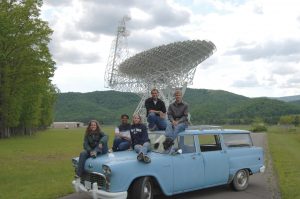

Research Experiences for Teachers
The National Radio Astronomy Observatory offers summer research positions at the NRAO in Socorro, NM, Charlottesville, VA and Green Bank, WV. The program, called Research Experiences for Teachers, provides teachers with 8-week summer internships working with individual astronomers or other NRAO staff on their research. RET participants get involved in one of several astronomy research projects which use radio telescopes to make observations, analyze data, construct instruments, or monitor the local interference environment.
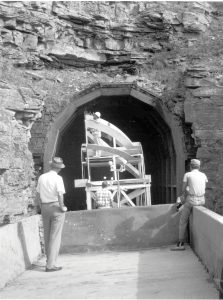
Transporting parts of the 140-foot telescope to Green Bank
The Green Bank site in West Virginia was chosen for its remoteness from the radio interference of cities. However, on occasion, this remote location has given us some headaches. In this photo from the early 1960s, engineers measure the clearance inside the Droop Mountain tunnel in West Virginia that stood between the steel manufacturers of our 140-foot (43-meter) telescope and Green Bank. This tunnel, and a few other tight spots in Pennsylvania, constrained the size of the polar shaft bearing to 17.5 feet — still the largest steel bearing ever made.
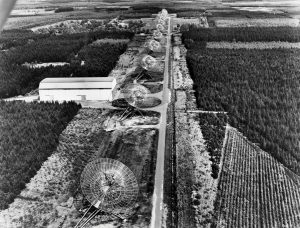
The Westerbork Synthesis Radio Telescope (WSRT)
The Westerbork Synthesis Radio Telescope (WSRT) in the Netherlands is an aligned array of 14 dish-shaped antennas that runs from east to west. Ten of the dishes have a fixed location, while two at the eastern end of the array can be moved on rails. Completed in 1970, this array was an inspiration for the NRAO’s Very Large Array (VLA) in New Mexico.
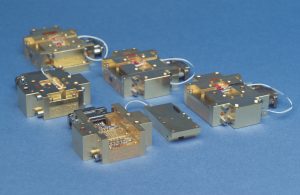
WMAP Amplifiers
Centimeter-wave radio astronomy receivers (under 50 GHz) now almost universally use cooled HFET (heterostructure field-effect transistor) amplifiers as the low-noise input amplifier. The NRAO has worked on the development of these amplifiers for many years and is largely responsible for their wide acceptance by the radio astronomy community. We designed and built 120 such amplifiers (seen here) for use on the satellite for mapping the cosmic microwave background radiation, originally called the Microwave Anisotropy Probe (MAP) and now known as the Wilkinson Microwave Anisotropy Probe (WMAP).
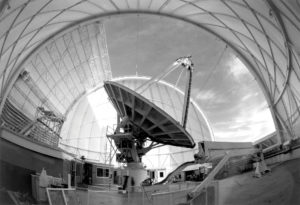
The 36-foot telescope on Kitt Peak, Arizona
The 36-foot telescope on Kitt Peak in Arizona was used to map the millimeter-wave Universe from 1968 until the summer of 1968 when it was closed for an extensive upgrade. In January 1984, the telescope was rededicated as the 12-meter Telescope, for its surface had been refined and its receivers improved to increase its abilities to see these shorter-wavelength radio waves. The 12-meter became famous for detecting dozens of molecules in space and inspiring the design of the Atacama Large Millimeter/submillimeter Array (ALMA).





